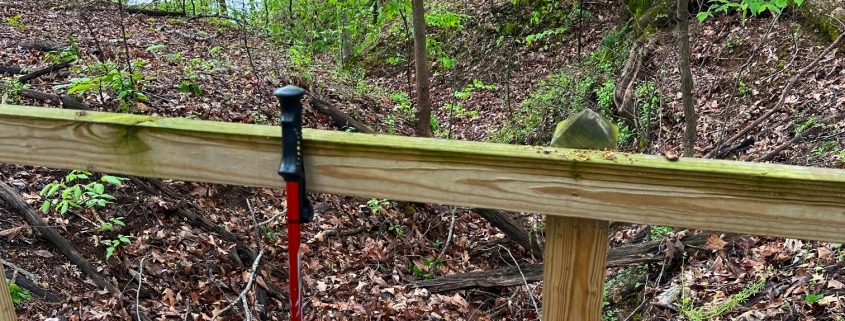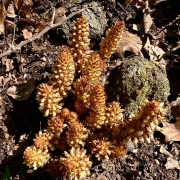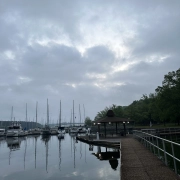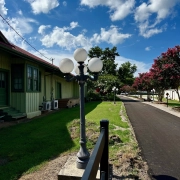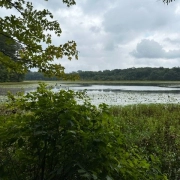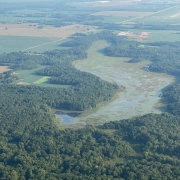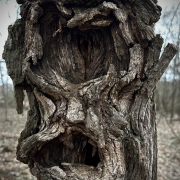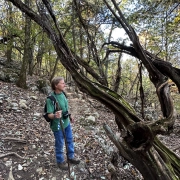Brief-Form Post # 32: Evidence of Past Land History at Alabama’s Joe Wheeler State Park!
10 photos and two videos
I am pleased to add the 32nd of my GBH Brief Form Posts (Less than five minutes to read!) to my website. I tend to get a bit wordy with my routine Posts. I don’t want my enthusiasm for thoroughness and detail to discourage readers. So I will publish these brief Posts regularly.
On April 17 and 18, 2024 I visited Joe Wheeler State Park for the quarterly meeting of the Alabama State Parks Foundation. Rather than present a single long Post from my wanderings during my on-site free time, please look for four separate photo essays:
- Reading evidence of past land use in the current 80-90-year-old forests — this Post
- Tree form oddities and related curiosities
- Lakeside forest panoply
- Dawn from the lodge docks
Scars from a Previous Century of Careless Land Stewardship
I arrived early enough on the 17th to spend time on the Awesome Trail. When the US Army Corps of Engineers acquired land scheduled for Wheeler Dam inundation and adjoining buffer acreage, severely eroded pastured and tilled acreage dominated. Such abused and devalued agricultural lands were typical in the 1930s across Alabama and elsewhere. It was a time of widespread farm foreclosures. My internet search for images of ruined agricultural lands in depression-era Alabama yielded hundreds of photographs like this one:

Online Image of Alabama Depression-Era
That image represents conditions that I am certain prevailed adjacent to the future Lake Wheeler. I stayed alert for confirming evidence as I sauntered along the trail. Forested land seldom erodes. Intact forest litter and organic layers, permeable soils, and a protective overstory ensures rainfall infiltration and discourages overland flow. Still-evident (yet not active) erosion gullies leading down to the lakeshore (below) are relics from past practice. The current forest cover discourages further degradation.
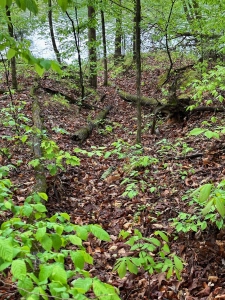
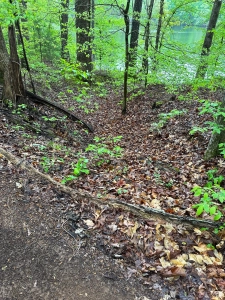
I recorded this 33-second video depicting an old gully scar:
The trail crosses several old gullies over newly installed wooden bridges. The views (left, up; right, down) show the depth and extent of the erosion scars.
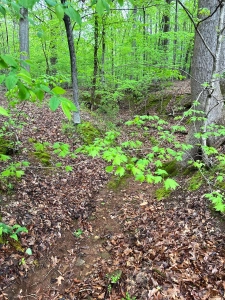
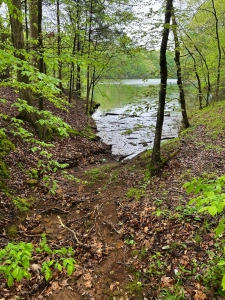
The wooden structures are sufficient to protect the trail and hikers from wet season crossings. The image at right shows the severity of now healing and healed washing. Large trees reach into the chasms of abusive land treatment.
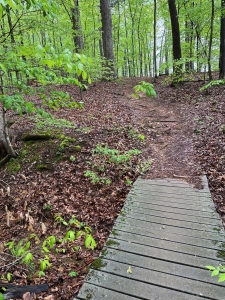
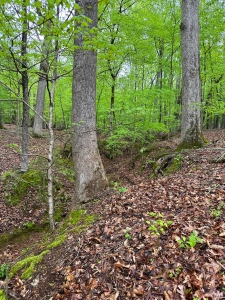
Another gully required a more substantial bridge spanning a gully reaching to water’s edge (right).
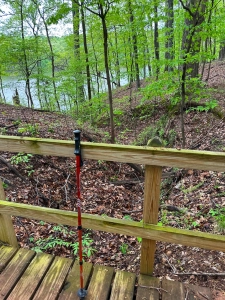
I wonder how may cubic miles of topsoil emptied into our rivers from 1850 to the 1930s. Too, too, too many!
Louis Bromfield, a 20th Century novelist and playwright, dedicated his life to rehabilitating the old worn-out Ohio farm he bought in the 1930s. He wrote:
The Land came to us out of eternity, and when the youngest of us associated with it dies, it will still be here. The best any of us can do is to change some small corner of this Earth for the better, through wisdom, knowledge, and hard work.
Such is one facet of our Alabama State Parks.
Long Term Implications of Eroded Topsoil
The Awesome Trail passes through a stand of loblolly pine that recently suffered extensive windthrow. Even trees growing in undisturbed, deep natural soils yield to high winds, either uprooting or breaking. I saw no evidence of widespread breakage; the wind toppled the root mass. Although I cannot be certain, I conclude that these deeply-gullied hillsides also lost 1-3 feet of topsoil, a condition chronicled across much of the piedmont and foothills of the eastern US.
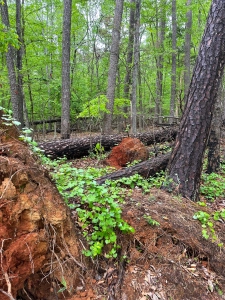
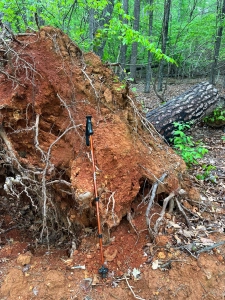
I recorded this 55-second video within the blowdown area:
The evidence of uninformed and irresponsible land treatment is evident wherever my travels take me across Alabama. I believe wisdom, knowledge, and hard work constitute the answer to preserving future land and forest productivity. John Muir gave hope to Earth’s capacity to overcome such abuse:
Earth has no sorrow that earth can not heal.
I accept the challenge of distilling these Brief-Form Posts into a single distinct reflection, a task far more elusive than assembling a dozen pithy statements. Today, I borrow a relevant reflection from Franklin Roosevelt about soil:
- The nation that destroys its soil destroys itself.
NOTE: I place 3-5 short videos (15 seconds to three minutes) on my Steve Jones Great Blue Heron YouTube channel weekly. All relate to Nature-Inspired Life and Living. I encourage you to SUBSCRIBE! It’s FREE. Having more subscribers helps me spread my message of Informed and Responsible Earth Stewardship…locally and globally!

